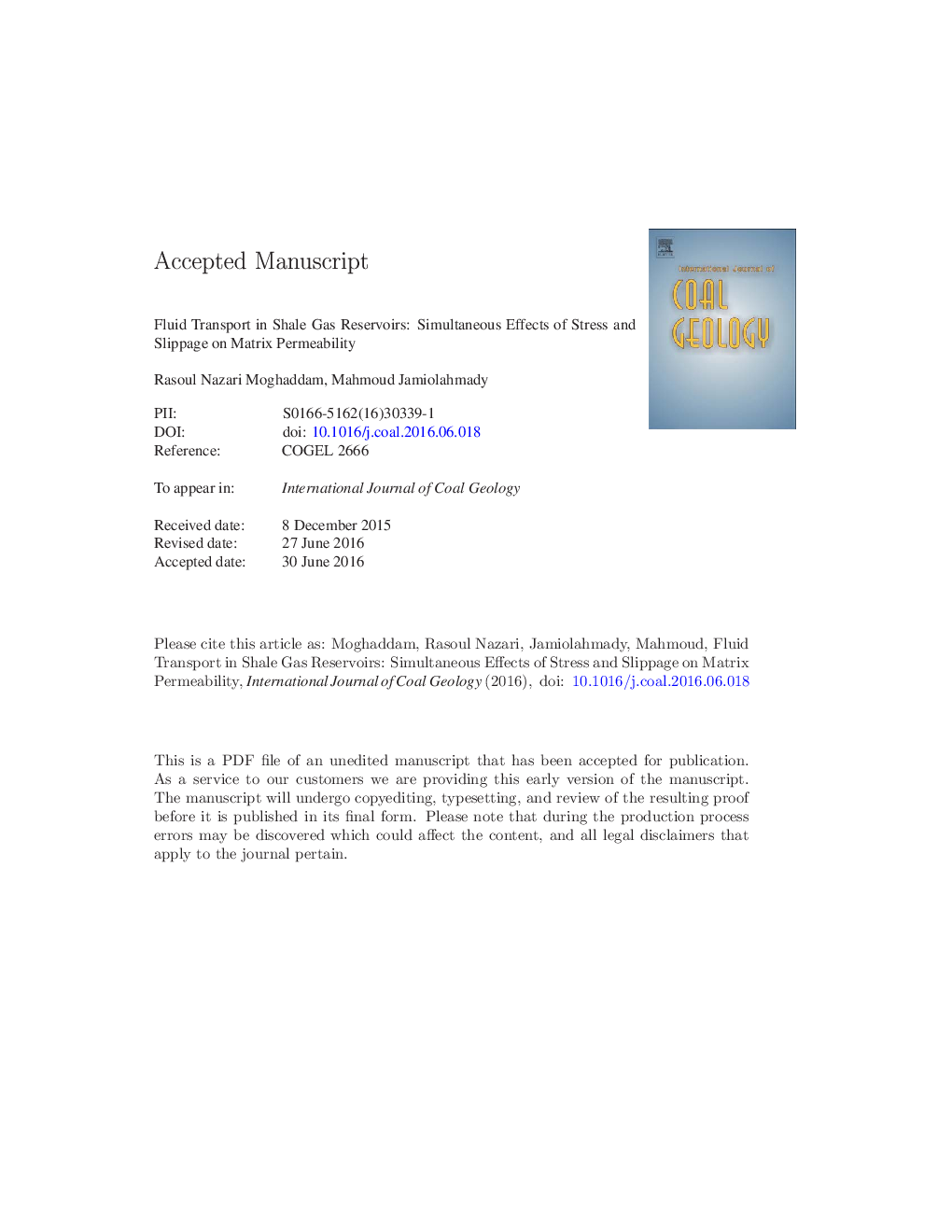| Article ID | Journal | Published Year | Pages | File Type |
|---|---|---|---|---|
| 8123768 | International Journal of Coal Geology | 2016 | 34 Pages |
Abstract
Gas flow modelling in shale and tight gas reservoirs is challenging mainly due to different pore-scale flow regimes present in micro- and nanopores of these reservoirs. Geomechanical stress also significantly affects the measurement and prediction of apparent matrix permeability. In this study, series of experiments were designed and performed on three shale samples to study the simultaneous effects of slippage and stress at five different pore pressures and four net stresses. The experimental data were used to obtain a general slip plot, which quantifies the effects of slippage on matrix permeability. Then, the stress effects were taken into account by modifying the average pore size and non-slip permeability at each net stress based on the experimental observations. It is found that the non-slip permeability of matrix and average pore size follow an exponential behaviour when changing the net stress. These two relationships were then incorporated into the corresponding slip flow model in order to capture the effects of slippage and stress at the same time. The validity of the proposed model was also investigated (using published data in the literature) which shows that the proposed technique is able to capture the intensity of permeability reduction and enhancement due to stress and slippage, respectively. This study increases our knowledge of rarefied flow dynamic inside micro- and nano-pores under confining stress, which is necessary for accurate prediction of apparent matrix permeability in the unconventional reservoirs.
Keywords
Related Topics
Physical Sciences and Engineering
Earth and Planetary Sciences
Economic Geology
Authors
Rasoul Nazari Moghaddam, Mahmoud Jamiolahmady,
